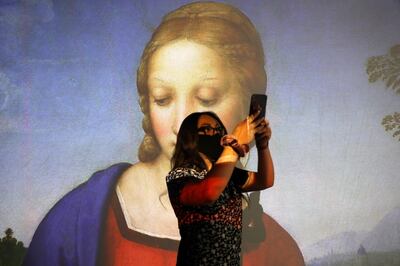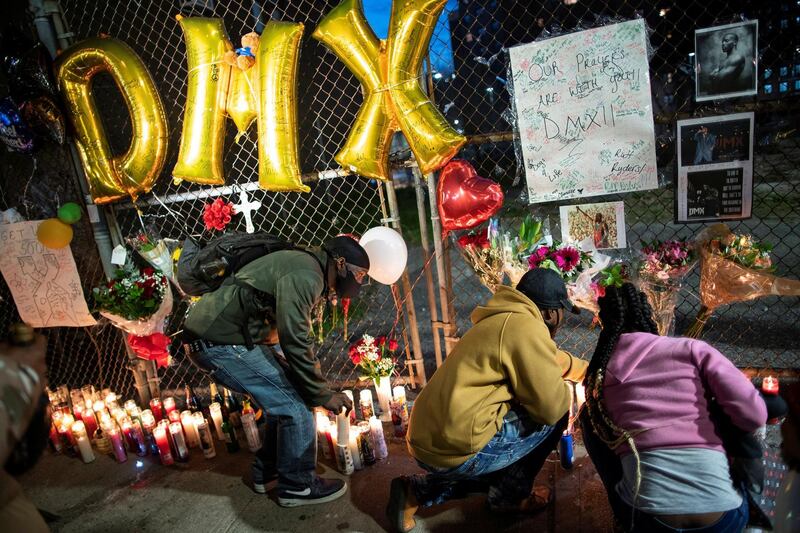Earlier this month, the music world was shocked by the death of hip hop legend Earl Simmons, better known as DMX. In a career spanning more than two decades, DMX sold over 74 million records worldwide, releasing seven studio albums and 47 singles. In a song from 1998 titled Slippin', he quotes the German philosopher-poet, Friedrich Nietzsche: "To live is to suffer but to survive, well, that's to find meaning in the suffering." By all accounts, DMX suffered greatly in his childhood. More importantly, though, he found meaning in that suffering.
Nietzsche has been described as the "poet laureate of the troubled psyche" based on his bouts of deep depression and other psychological complaints. Like Nietzsche, DMX also experienced mental health problems. The rapper suffered from bipolar disorder, a condition characterised by episodes of mania (extreme highs) and depression. Some people can even cycle rapidly between both states, like mood swings on steroids.
Beyond Nietzsche and DMX there is a very long list of poets, painters and notable creatives who have also experienced the pendulum of extreme mood states. Is there a link between extraordinary creativity and specific mental health problems? And if there is, might this not alter our tendency to stigmatise those who experience such conditions?
In the story of humanity, the idea of a link between creativity and mental ill-health goes way back to our earliest human ancestors. The cave art found at sites such as Lascaux in France and Altamira in Spain could be evidence of psychiatric illness among early modern humans around 10,000-50,000 years ago. This is the opinion of a growing number of archaeologists. In his book Cave Paintings and the Human Spirit: The Origin of Creativity and Belief, David Whitley, former chief archaeologist at UCLA, argues that many of these cave artists experienced what we today call bipolar disorder. Mr Whitley believes our ancestors harnessed the mood disorder, channelling their creative impulse into extraordinary works of art.

The ancient Greek philosopher Socrates made a similar connection, arguing that the best poetry was composed by those "who have been driven out of their minds". The link between poetry and mental ill-health can be seen in the literature of ancient Arabia too. For example, in the tale of Layla and Majnoon – the Middle East's Romeo and Juliet –Qays bin Al Mulawwah is driven mad by his love for Layla and ends up wandering the desert, composing exquisite love poetry and reciting it to the wind. This behaviour earns Qays the derogatory nickname of majnoon (madman), even though everyone celebrates his poetic ability.
The word majnoon shares its roots with the word jinni, or as it is often written in English, genie. The jinn (plural) are unseen beings from a parallel realm – spirits if you like. A traditional view of madness is that it can be caused by interference from the jinn. In pre-Islamic Arabia, three types of people are repeatedly associated with the jinn; these are the kahin (shaman or oracle), the madman and the poet. The latter two are frequently synonymous, and the kahin often voiced his or her contacts with the spirit world in poetic verse know a saj. This connection between creativity and madness crosses epochs and cultures.
Current psychological research on the topic lends some scientific evidence to the idea of a link between creativity and some forms of mental ill health. A review of this research, published in Perspectives on Psychological Science in 2017, shed further light on the relationship. Looking at 36 separate studies revealed that creative people (fine artists, creative writers, poets etc.) were more likely to have a mood disorder than their less-creative counterparts. Furthermore, creativity was most frequently associated with bipolar disorder.
Another review study, published in the Psychological Bulletin in 2016, looked at the previous research exploring the link between creativity and vulnerability to various psychological disorders, such as depression, anxiety and bipolar disorder. The research team found that, overall, there was a relationship between creativity and a vulnerability to bipolar disorder. The same association, however, was not observed between creativity and risk of other psychological conditions. There seems to be a special connection between the symptoms of bipolar disorder and artistry.
DMX represents a link in an unbroken chain of highly creative individuals stretching back into the mists of time. He was one of those rare individuals, outliers on the spectrum of neurodiversity, who can find meaning in suffering and transform pain into art. In the Archeology of Madness, David Whitley writes: "Madness is part of what makes us cognitively modern. Inasmuch as we value unusual creativity, humankind may then be better served by recognising, celebrating, and promoting this fact."
Justin Thomas is a professor of psychology at Zayed University and a columnist for The National







